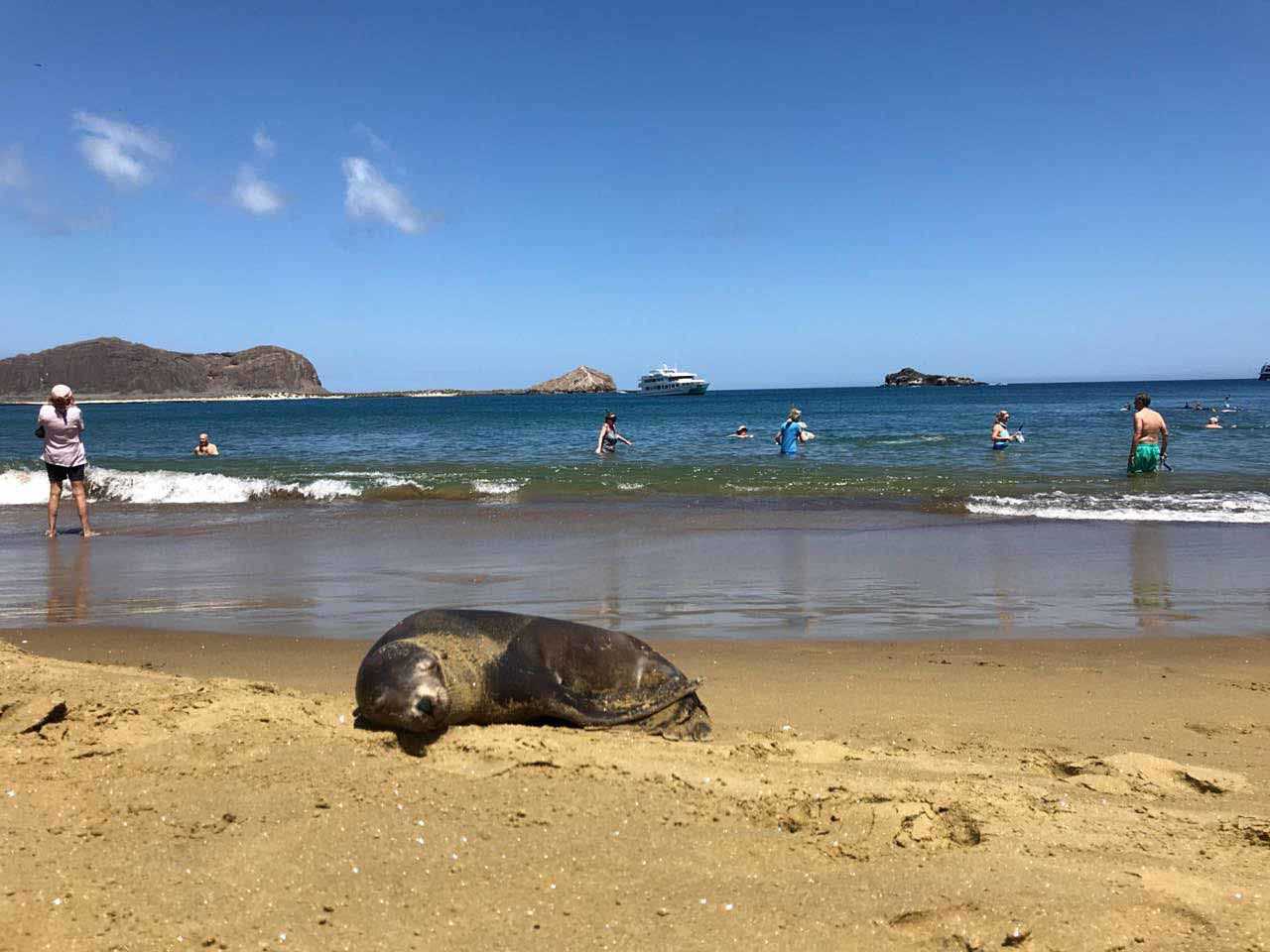For our last expedition day, we visited one of the oldest islands of the archipelago, San Cristobal Island. This is also the administrative capital of the islands and the eastern most point in the archipelago. In the morning we disembarked on an olivine beach welcomed by a small colony of sea lions. Here we hiked up a tuff cone formation to look for red and blue footed boobies. As we walked along the trail we had close encounters with bright blue and bright red footed birds, dancing their courtship ritual and others feeding their chicks. It is amazing to experience such close encounters with such beautiful creatures and observe their behavior as if we were not there. To finish an amazing expedition, in the afternoon we saw the sun set as we walked along a white sand beach called Cerro Brujo, surrounded by Galapagos sea lions coming back to rest on shore. Our guests might be leaving the Galapagos, but the Galapagos will never leave them!
- Daily Expedition Reports
- 10 Feb 2018
San Cristobal Island, 2/10/2018, National Geographic Islander
- Aboard the National Geographic Islander
- Galápagos
Gianna Haro, Naturalist
Most of Gianna´s memories seem to be dreams, made on flawless white sandy beaches with black lava rock contours and gorgeous turquoise ocean waters. Most of it happened while barefoot, in an enchanting place that some people regard as an ideal natura...
Read MoreShare Report
Related Reports
11/23/2022
Read
National Geographic Islander II
Isabela and Fernandina
Our day began with the chance to point out a lot of interesting geological features as we enjoyed Zodiac tours along a massive flank of Ecuador Volcano on Punta Vicente Roca. In the afternoon, we took a sunny walk on Punta Espinoza on Fernandina Island. We spotted many iguanas, and a bunch of sea lions hanging around, too.
11/22/2022
Read
National Geographic Islander II
North Seymour & Rabida Islands
Relatively small and low compared to neighboring Santa Cruz, North Seymour is located to the north of Baltra. The island is dry with predominantly low shrubs, like prickly pear cacti. The incense trees are bare during the dry season. Seabirds like frigatebirds and blue-footed boobies nest on the island, and sea lions rest on the sand when they are not fishing. Land and marine iguanas also live here. Rabida is in the middle of the archipelago and has a striking red sand beach. We observed a small colony of sea lions of all ages resting or nursing. Behind the beach, American flamingos nest in a brackish lagoon. This island is full of contrasts and wildlife that we enjoyed observing during this day of expedition.







